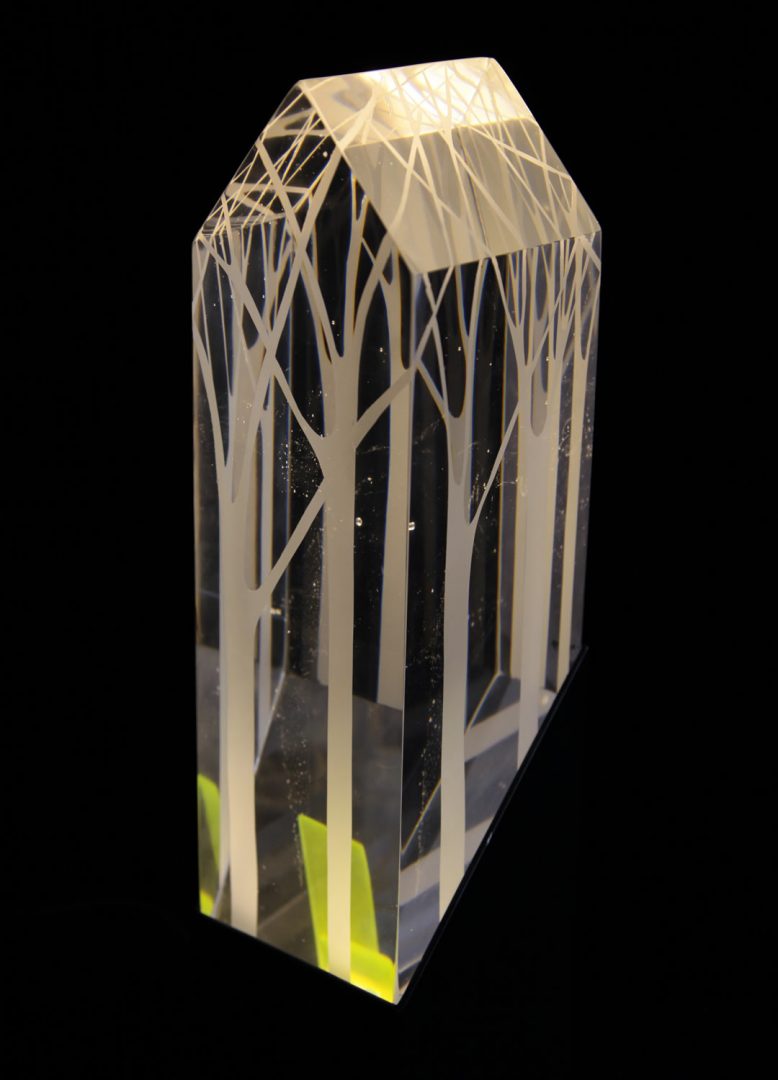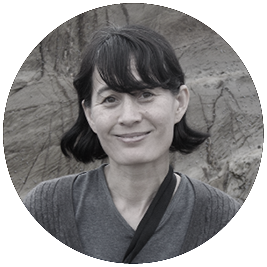Meet the School of Communication and Creative Arts
Today we speak with Lienors Torre: Educated as an animator and as an artist working in the medium of glass, Lienors has a unique understanding of animation and filmmaking (of movement and time-based narrative) and a strong understanding of materiality and form. She is also the co-author of the first published book on Australian animation history.
What do you teach at Deakin?
Lienors: I teach Animation, Design and Film-making. The units I chair are: ADA102 Building 3D Worlds, ADA201 Creating 3D Characters, and ADD103 Design Technologies 2. These units are part of the Bachelor of Design (3D Animation) degree program. They are units which help you learn complex software while also giving you the opportunity to develop your aesthetic and create well-designed characters, objects and worlds.
Animation is an extremely effective means of communication and it represents a universal language that everyone responds to. It is also an incredibly creative medium – there is nothing more thrilling than to witness your objects or characters suddenly bursting into life.
3D animation encompasses a wide range of skills relevant to screen-based works whether they are traditional movie screens, mobile devices or VR spaces. It also gives you the ability to transform your virtual 3D objects into real-world objects through 3D printing. I find the dichotomous nature of working with these tools; and the ability to traverse back and forth between the virtual and the actual, the 2D and the 3D, the surface and the immersive, to be an intriguing and highly creative experience. There is great freedom in being able to imagine something and then to have the skills to make it.
How would you describe your creative practice?
Lienors: My creative practice combines animation, art, design, craft and theory. I have been formally educated as an animator and as an artist working in the medium of glass. From my experience in these two diverse mediums I have developed a unique understanding of animation and filmmaking (of movement and time-based narrative); as well as a strong understanding of materiality and form.
When I look at my world I see moments which when integrated together create rich and multifaceted stories. I find that incidental story, atmosphere, and my aesthetics define my work but that theory and the very nature of the materials that I work with also play a very important role.
Glass and animation are contradictory materials. They are concerned with materiality and immateriality, concrete objects and time-based ephemerality. Glass can be a lens or a window through which we look at the world and animation is an effective means by which to transcribe our world (and quite often we view it through a glass screen). The screen surface is something I find intriguing especially when its definition becomes ambiguous.
I am also an animation historian and co-author of two books on the subject of Australian animation history: Australian Animation – An International History (Palgrave 2018) and Grendel Grendel Grendel – Animating Beowulf (Bloomsbury 2020).

The Lost Room 2017
Who has been your biggest influence on your career to date?
Lienors: I have had a number of very influential teachers and lecturers in my own academic career – from undergraduate through to my PhD studies. Many of these teachers have had a large influence on the way I think and make things; and on my creative directions and theoretical understandings.
What do you consider your greatest achievement in life?
Lienors: I earned my MFA (Master of Fine Arts) in animation at CalArts in America. Upon returning to Australia, I realised that I had acquired extensive knowledge of American, Japanese and European animation – but that I still knew very little about Australian animation. I began, along with another academic, an extensive, decade long, project in which we comprehensively documented and researched the full scope of Australian animators and their films. We were able to interview a vast number of historic figures of Australia’s animation history. This research led to countless historical discoveries – which have now been documented – and many of the original artefacts have been preserved in institutions such as The National Film and Sound Archives, rather than being lost in dusty garages. It has also led to the co-writing of the first published book on Australian animation history which covers an expansive period of time from the early 1900’s to the present day.
What has been your favourite Deakin experience?
Lienors: My favourite experiences at Deakin involve collaborating with my colleagues and students to develop innovative ideas and projects. Recently I have been working with colleagues in such diverse areas as journalism, information technology, and optometry. I find each interaction and project that I collaborate on, not only provides me with new ways of looking at my own discipline and its ability to contribute to finding solutions to practical real-world problems; but these interactions further inform my own creative practice.
How would you describe the Deakin learning experience for students?
Lienors: It is a focussed learning environment. There is a strong student community, excellent facilities, and great atmosphere. There are numerous opportunities to collaborate with and take units in other related areas. Blended and multi-modal learning are important features of the Deakin learning experience; with both online and face-to-face learning experiences embedded in most units. Further opportunities arise for students who are interested, such as internship units and an overseas study tour unit where students can experience an industry led project in Japan alongside Japanese students at a respected university.
What is your best advice for someone looking to enter a creative career?
Lienors: To be multi-skilled and versatile, but to have a strong sense of your own identity and creative direction. Be aware of what others have done and are doing in your field – build from these, but do not necessarily emulate them. Today, I think it is also very important to look outside of your field for inspiration, relevance and potential sites for collaboration.
What is it like teaching and studying your discipline online?
Lienors: Technology has now enabled us to effectively engage in online teaching and learning. Both blended and multi-modal learning are important features of the Deakin learning experience; with both online and face-to-face modes embedded in most units. Through these diverse delivery methods, a rich teaching and learning experience develops.

Dr Lienors Torre teaches in the Bachelor of Design (3D Animation) course.

You must be logged in to post a comment.